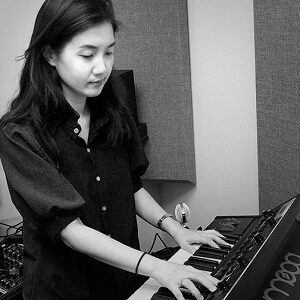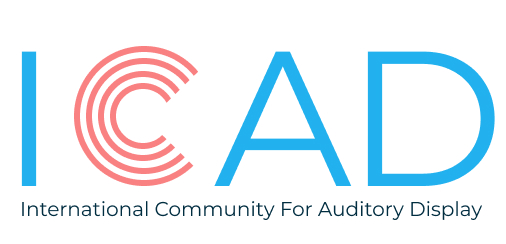Winner of the ICAD 2021 Best Use of Sound Award
So, who are you?

Hello, ICAD Community! My name is Rosa Park. I am Assistant Professor in the School of Cinema at San Francisco State University, where I teach courses in sound design and production, interactive cinema, and experimental filmmaking. My research interest is centered on the study of the physicality of sound, sonification, generative music, environmental music, psychoacoustics, which are deeply rooted in my cultural identities, memories, and religion. I am currently working on a number of different projects, which include a live computer music composition, “The Tree In My Backyard Is Tall And Strong,” a sonification project, “Algorithmic Music Composition for The Environment,” and an experimental film and sound installation, “Walking the Threshold” in which I experiment with a form of expanded cinema and audio spatialization.
How did you end up working on Sonification and Auditory Displays?
I was fascinated by the potential of sonification as a tool to express the urgency of social and political issues. From 2019, I began creating Pattern Play series and presented my first composition, “Pattern Play No.2” at ISSTA 2020: Sonic Practice Now, which reflects the data of the COVID-19 outbreak. When I moved to the Bay Area, I started noticing vibrant communities of scientists and musicians who actively take creative action against changing climate conditions, which led me to my next project, “Pattern Play: Interactive Music System for The Environment” in which I created a visceral understanding of climate crisis in the four environmental sector, which includes Global land-ocean temperature, Sea Level change, Antarctic Ice mass variation, and Atmospheric carbon dioxide (CO2) levels during a particular period from 1800 to 2020.
What is the role of Sonification/Auditory Display in your research?
I have used sonification as a tool to interpret scientific data and convey its unique patterns in a more visceral way. I want to take my research to the next level and experiment with the possibility of creating a spatial sonification to examine how spatialization could enhance the sensation of physical proximities of sound. Sensibilities heightened in an immersive space could increase the level of both emotions and learning. For one of my recent projects, “Walking the Threshold,” I plan to use a surround sound technology, demonstrating a 7.1 channel audio display called Dolby Atmos which consists of an array of eight speakers accompanied by one subwoofer along with video and light mapping technologies called MadMapper. The work is in its preliminary stages of development, but I hope to complete and present it next year.
What is the most challenging part in your work?
In completing my Pattern Play series, translating numbers from a large quantity of data to sound was time-consuming. Also, performing this task without an expert’s advice and analyzing the languages of scientific data with limited ability to read was quite challenging. It would be wonderful to have useful web recourses for sonification researchers, such as online data reader tools or repositories/platforms where scientists, designers, engineers, musicians, and artists working in this field can communicate and share information or feedback with each other.
Anything special ICADders should know about you?
During my free time, I enjoy drawing, painting, hiking, watching movies, and spending time with my two fur babies, Star and Hodong! I also listen to a wide range of music daily, which includes the sacred song of the Gregorian chant and the Magnificat, amongst others. I was raised Catholic in a neighborhood where everybody seemed to be Catholic, which shaped my personality profoundly. I was given my baptismal name Rosa, named after St. Rose of Lima, when I was born. I think my Christianity is the primary energy in my creative journey, and I continue to seek my faith in God through my scholarly activities.
What would you like to say to ICADders?
I was so fortunate to be able to join the ICAD community this year! I have been to many conferences before, but the ICAD 2021 conference was the most memorable and insightful experience. I was amazed by the generosity, creativity, and kindness of the people in the community; it was full of thoughtful conversations with an exciting group of scholars and artists. I am grateful and look forward to working together in the years ahead.
What is your favorite sonification/auditory display ever?
I found COVID-19 NYC Neighborhood Impact project (https://youtu.be/0ZmQhER7r4w?t=53) is fascinating. It is a map-based data visualization that translates the number of NYC’s COVID-19 cases into sound. Sound tells the story of real people, especially those who live in vulnerable communities in NYC.
What is the study/tool/work in the field of auditory display you are most proud of?
I am happy with my sonification work, Pattern Play Interactive Music System for The Environment (https://youtu.be/1aa-gVoPvr0), that I presented at the ICAD 2021 conference this year!
Any way to learn more about your work or reach out to you?
Say hello any time at rosapark@sfsu.edu, and here’s my website: www.rosapark.org
